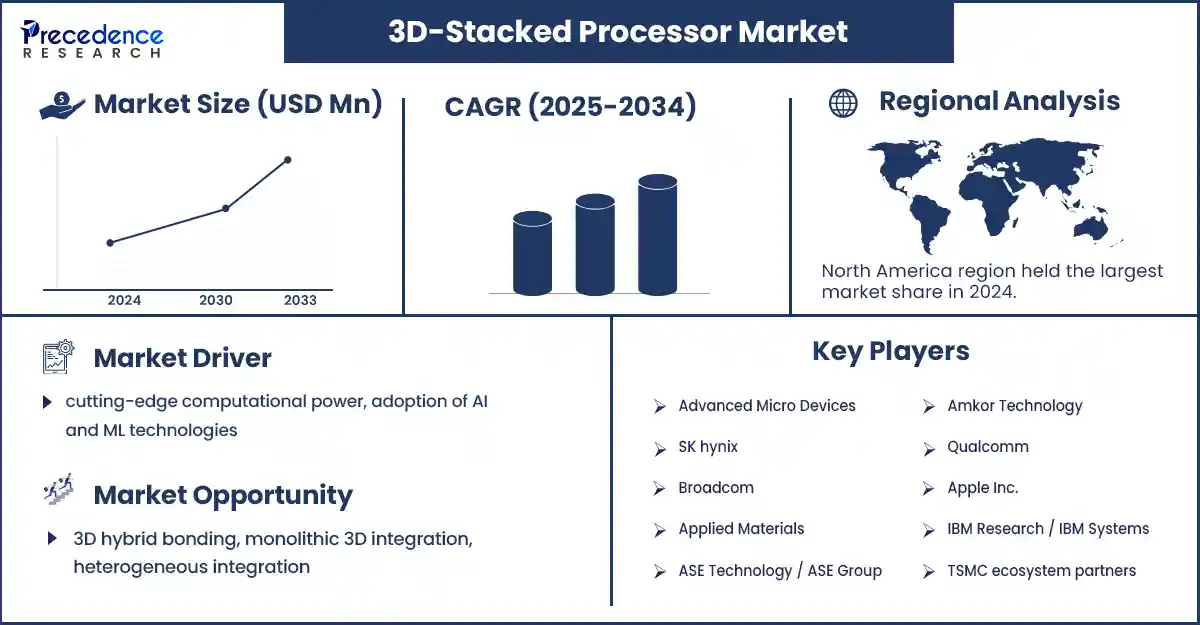November 2025
The global 3D-stacked processor market is growing with rising demand for high-performance, energy-efficient chips, driving innovation in semiconductors worldwide. This market is expanding due to the increasing demand for next-generation computing applications, including AI, data analytics, and edge computing, which require higher memory bandwidth, lower latency, and more efficient integration of logic and memory within compact chip architectures.

The 3D-stacked processor market is experiencing significant growth due to several converging factors. The ever-increasing need for bandwidth in AI and ML applications highlights the limitations of conventional external memory interfaces, which now restrict performance. As Moore's Law scaling slows down, chip designers are turning to vertical stacking and heterogeneous integration to achieve higher die density and improved performance per unit area. Simultaneously, advancements in packaging and interconnect technologies are making multi-die stacking more feasible and dependable.
Asia-Pacific dominated the 3D-stacked processor market in 2024 due to its strong position in semiconductor manufacturing and advanced packaging. Key players in Taiwan, South Korea, China, and Japan, including major foundries and memory makers, contribute to this dominance. This concentration fosters ecosystem advantages, efficient supply chain integration, and quicker time-to-market for new products. These factors collectively solidify the region's leadership in this market.
North America is experiencing the most rapid growth in the 3D-stacked processor market, driven by significant investments in research and development. The region boasts a well-established semiconductor design ecosystem, including companies like NVIDIA, Intel, and AMD, along with numerous startups. Government incentives, such as the CHIPS Act, further support this growth. These factors have led to high demand for advanced packaging and 3D-stacked designs.
| Report Attribute | Key Statistics |
| Quantitative Units | Revenue in USD million/billion, Volume in units |
| Largest Market | Asia-Pacific |
| Base Year | 2024 |
| Regions Covered | North America, Europe, Asia-Pacific, Latin America, and the Middle East & Africa |
Get this report to explore global market size, share, CAGR, and trends, featuring detailed segmental analysis and an insightful competitive landscape overview @ https://www.precedenceresearch.com/sample/6942
You can place an order or ask any questions, please feel free to contact us at sales@precedenceresearch.com |+1 804 441 9344
November 2025
November 2025
April 2025
May 2025